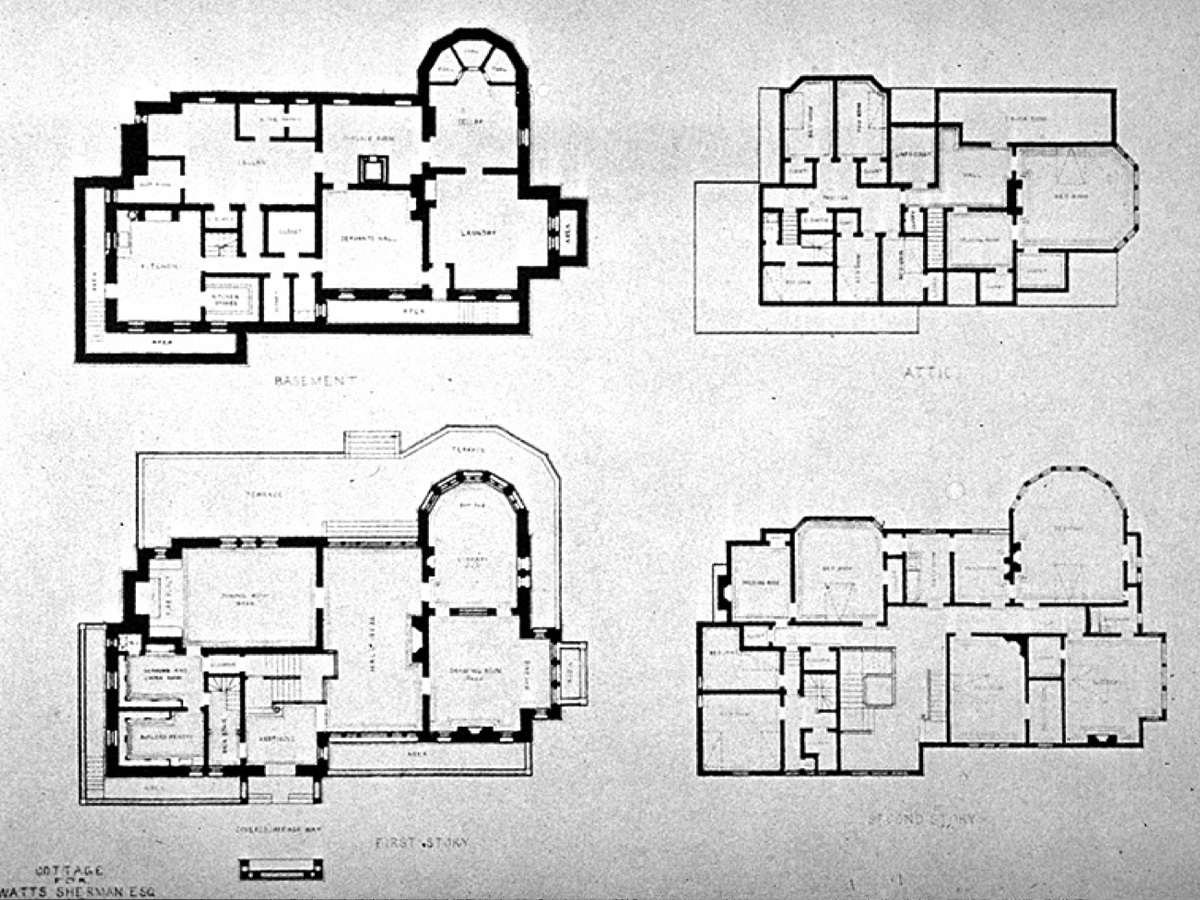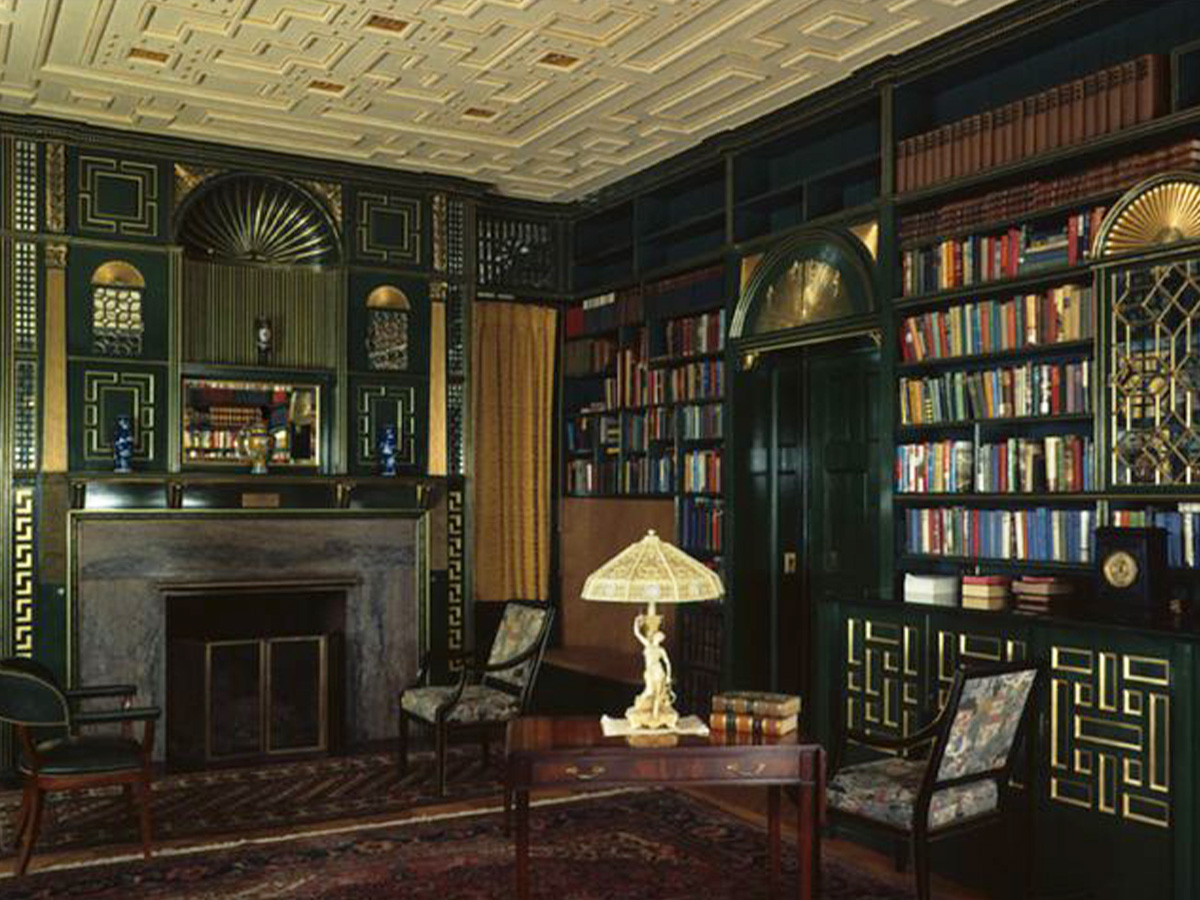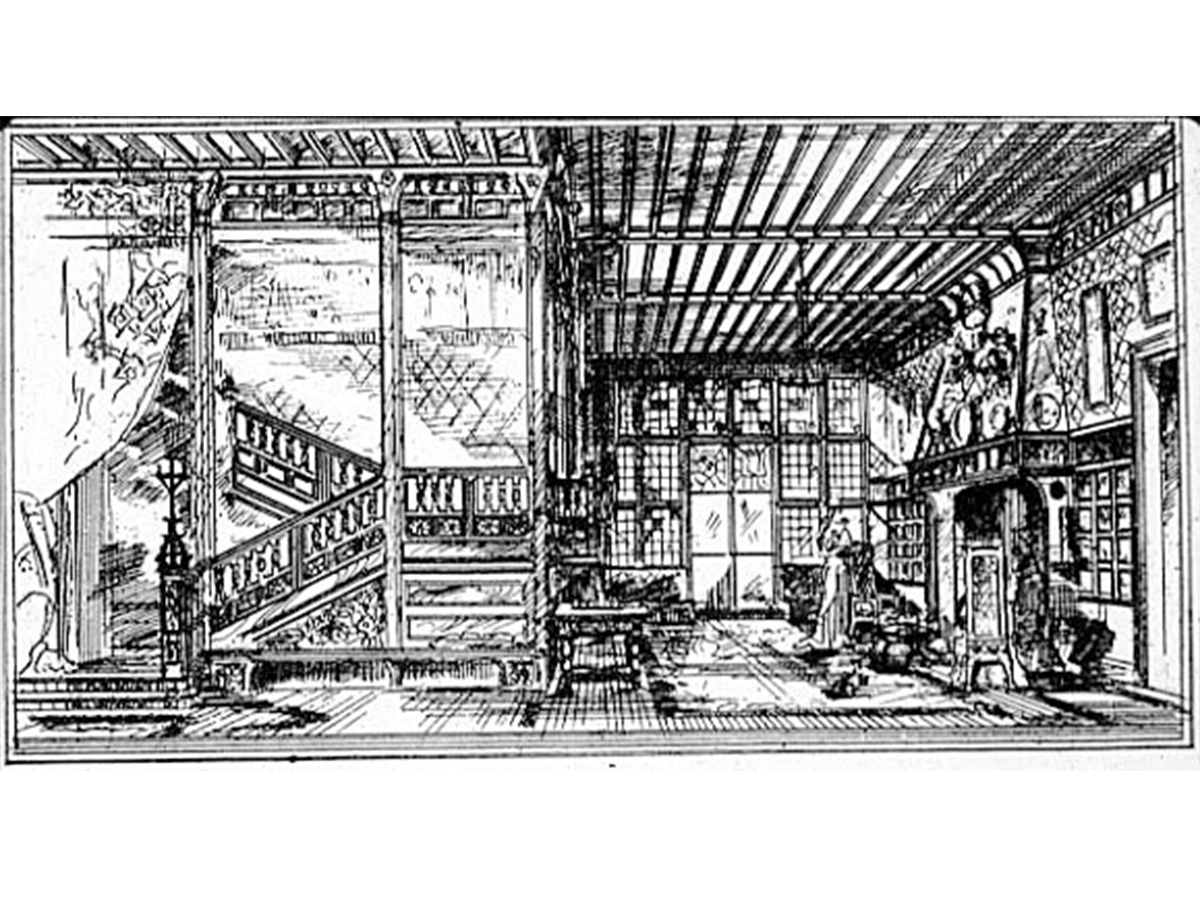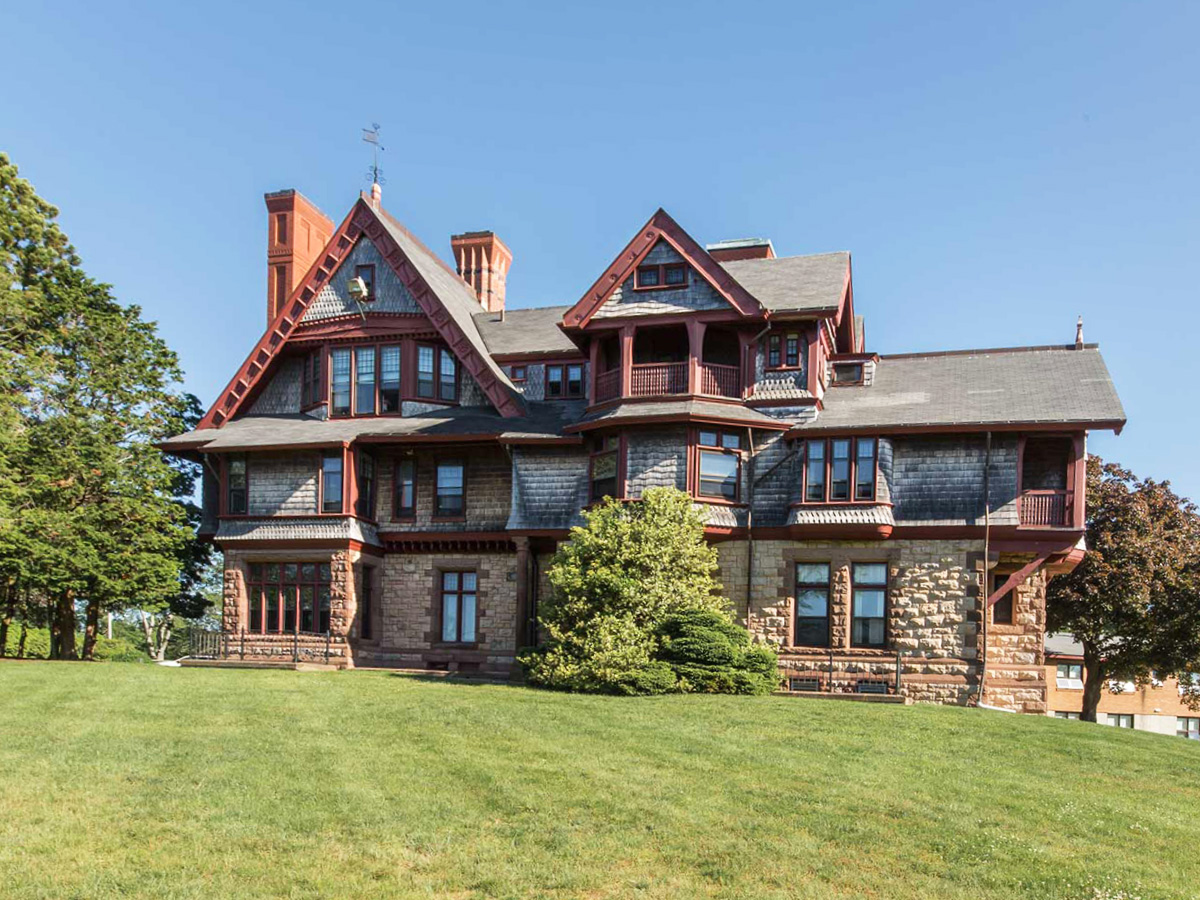
Watts-Sherman House
The William Watts-Sherman House is an architectural landmark set amongst the opulent mansions of Newport, Rhode Island. It was designed from 1875-76 by noted architect Henry Hobson Richardson, and although it is a large and gracious home, it is more noted for its design innovation than grandeur. The house holds a significant place in American architectural history, heralding the dawn of the Shingle Style and influencing succeeding generations of architects.

Photograph – At Construction
It is an unusual style house for Richardson who was generally known for his heavy masonry buildings with Romanesque arches, which was a style often called “Richardsonian Romanesque” in his honor. The exterior, often attributed to Richardson’s assistant Stanford White, is generally described as Queen Anne Revival, but there are a number of elements that hint at the Shingle Style that was soon to come. Ornate planes of cut shingles, typically reserved for outbuildings and accessory structures, adorned the upper floors, contrasting with the rose-colored granite base. Wide, overhanging eaves and massive chimneys accentuated the verticality of the design. This new visual language projected a growing desire for informality and expression of natural material, which was a strong contrast to the formal Italianate and European styles prevalent in the period just before the Gilded Age.

Watts Sherman House Floor Plans
The interior, also a collaboration between Richardson and White, offered a harmonious balance. Dark paneled walls and beamed ceilings created a sense of enclosure and warmth, while stained glass windows and carved woodwork added a touch of Victorian elaboration. The spatial layout, designed by Richardson, broke from the traditional rigidity, offering a more open and functional living environment which hinted at the plans White would create for the Isaac Bell House.

Watts Sherman House Interior
The Watts-Sherman house wasn’t just aesthetically groundbreaking; it marked a shift in American architectural philosophy. Prior to this, architects often focused on closely copying European styles. This building, with its blend of influences and emphasis on functionality, showcased a growing American architectural identity and self-assurance.
The impact of the design was notable. The design of the house was widely disseminated in architectural publications of the time, attracting national attention and inspiring architects across the country. Both Sandford White and Charles Follen McKim had spent time in Richarson’s office and apparently the studios of McKim and Mead were just down the hall. When McKim recruited the young and talented White to join them in 1879, the firm became McKim, Mead and White. Its first commission was the Newport Casino, which is very often identified as the first building created in what Prof. Vincent Scully would later call “The Shingle Style.”

Interior Rendering by Sanford White
The enduring legacy of the William Watts-Sherman house lies in its role as a being a transition for a new and innovative architectural movement. It stands as a testament to embracing fresh ideas of the young Stanford White and forging a distinct American architectural identity. Today, the house serves as a dormitory for Salve Regina University, which has repurposed many Gilded Age mansions and structures into dormitories, faculty offices and classrooms. It became a National Historic Landmark in 1970.

Exterior Render
Beyond the aesthetics, the Watts-Sherman house serves as a reminder of the importance of context. Built at a time of social and cultural change, it reflected a growing desire for informality and a uniquely Americanized architecture style of design. It is also known for being the design starting point for Standford White, one of the most gifted and innovative architects of his era.

Watts Sherman House Exterior
Looking to remodel your home? Let’s connect.
Join the Architectural Forum to stay up-to-date with architectural news from Rhode Island and abroad.
Ross Cann, RA, AIA, LEED AP, is an author, historian, teacher and practicing architect living and working in Newport, RI. He holds degrees in Architecture and Architectural History from Yale, Cambridge, and Columbia Universities. He is a Leadership in Energy and Environmental Design Accredited Professional.
At A4 Architecture + Planning we are expert at integrating building codes into our designs to provide safer and more long-lasting building solutions for our clients. If you are interested in learning more about what can do for you reach out to us at any time!
Discover more from reviewer4you.com
Subscribe to get the latest posts to your email.





